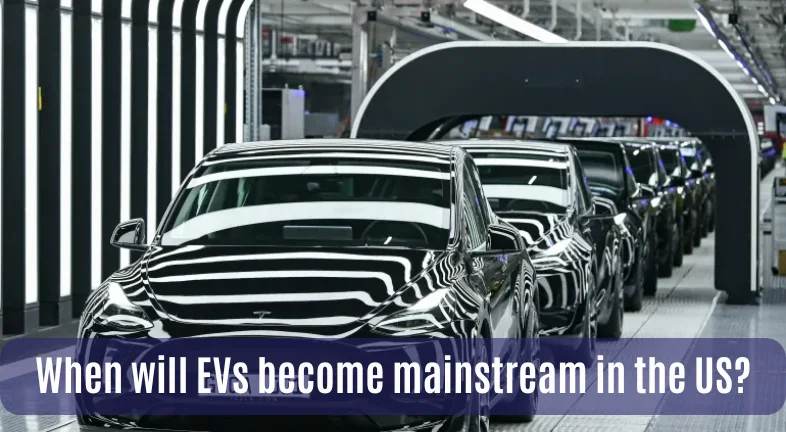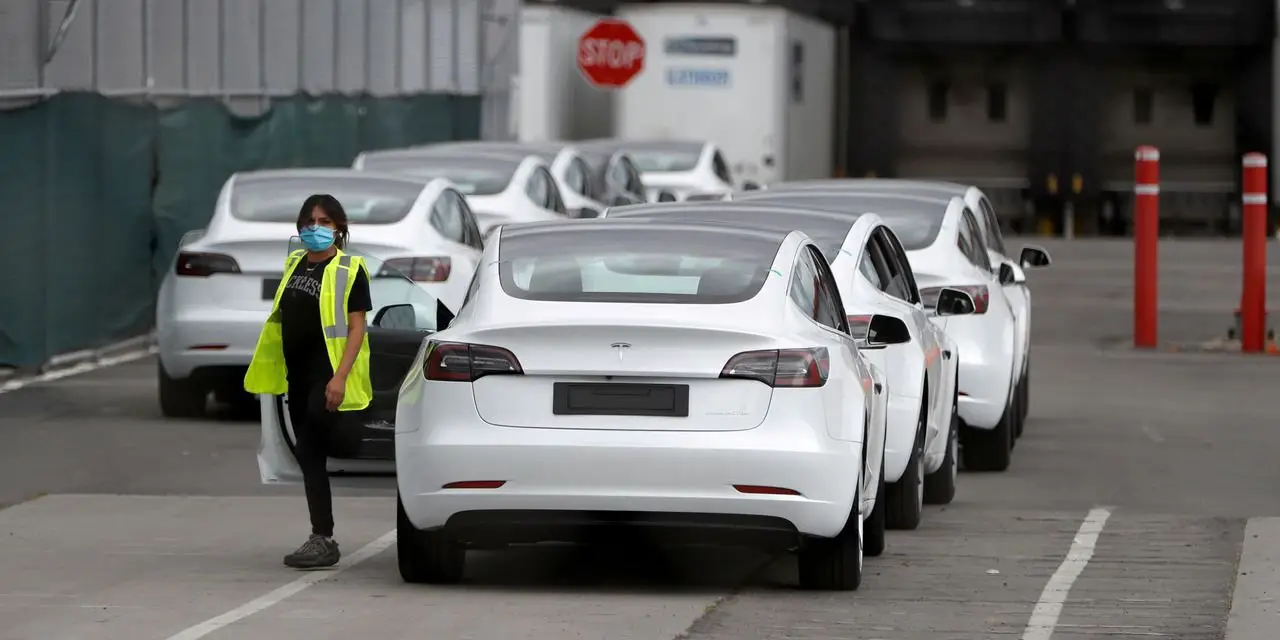Electric vehicle adoption ‘inevitable’ in US, but unclear how fast transition will happen, experts say.
Robert Blake, an ancestral resident of Red Lake Country in Minnesota, looked for a really long time as non-renewable energy source organizations constructed pipelines through his countries.
Mainstream in the US?
“How might we keep on opposing the non-renewable energy source foundation?” thought Blake, leader head of Local Sun People group Power Advancement. “That is the point at which we saw this award an open door for electric vehicle charging stations.”

In 2021, Local Sun got almost 7,000,000 bucks from the US Division of Energy to fabricate an organization of charging stations between 23 reservations in Minnesota, South Dakota and North Dakota — states with probably the most reduced quantities of charging stations in the country. The undertaking, Electric Country, additionally gave 15 electric vehicles to Red Lake Country and Standing Stone, with more planned for conveyance.
Universally, the electric vehicle unrest is blasting, as indicated by another report from the Worldwide Energy Organization. It predicts that flooding interest over the course of the following ten years will redo the worldwide vehicle industry and essentially decrease oil utilization.
In the US, electric vehicles are rapidly moving from periphery to standard. Albeit the business faces close term difficulties, the IEA report predicts just about one out of five vehicles sold in the US will be electric by 2030. A February report by Clean Venture Screen saw that as, in spite of titles proposing a lull, 2023 deals in the US were at the highest point of the scope of projections.
The shift to electric vehicles is key to emanation decrease objectives in the US, one of the world’s biggest ozone harming substance (GHG) producers — second just to China. Transportation is the monetary area with the biggest GHG discharges in the US, making up 28% of all out emanations.
For Blake, empowering the change to EVs is one method for opposing petroleum derivatives. “The oil organization might get their pipeline fabricated, and they might win the fight, yet they won’t win the conflict,” he said.
EV trajectory is upward
There is no question that the US has falled behind China, the EU and Norway in setting up its supportive of EV arrangements, yet it is presently following similar way as effective nations, made sense of Joel Jagger, senior examination partner at the World Assets Establishment’s Frameworks Change Lab.
“In general, it’s going all around well,” he said. “Indeed, even last year, the US sold 1,000,000 EVs interestingly.” Deals expanded by around 50% from 2022 to 2023, which he called “eye-popping development.”
Jagger ascribes the development to the 2022 Expansion Decrease Act, which gives sustainable power subsidizing and tax breaks, the 2021 Foundation and Interest in Positions Act, which designates five billion bucks from 2022 to 2026 to fabricate charging stations, and new guidelines this year from the Ecological Assurance Organization.

The EPA projects the new contamination guidelines will bring about 66% of new traveler vehicle deals being electric by 2032, while likewise further developing air quality and forestalling seven billion tons of fossil fuel byproducts. “Those will be truly significant,” Jagger said of the EPA guidelines.
Despite the fact that power request will increment somewhat as EVs become more inescapable, the switch will diminish in general petroleum derivative interest, Jagger said. “Request would marginally increment for power with a percent of that approaching from petroleum products, yet that would be vigorously offset by the diminishing popular for gas, which is 100% non-renewable energy source,” he said. Over the long haul, as the energy change occurs, the portion of petroleum derivatives fueling the lattice will diminish.
For the present, a few carmakers face transient obstacles. In April, Tesla revealed that deals were down, prompting a 9 percent drop in income in the principal quarter of 2024. Security issues with its “Cybertruck” prompted a review, and it has attempted to rival other EV organizations entering the market.
While Tesla’s awful deals quarter is creating negative titles, Jagger said it means quite a bit to check the 10,000 foot view out.
“Indeed, there will be a few knocks, yet by and large the direction is vertically,” he said. “There’s a great deal of highs and lows as these automakers attempt to beat each other in the new EV markets. There’s bunches of aggressive plans, there’s loads of new EV models being delivered, and they’re not all going to be a crushing achievement immediately.”
Transient variables easing back the change
In any case, the EV progress faces obstacles. For example, the IRA tax breaks boost homegrown creation of batteries and minerals.
“Those homegrown substance necessities may be somewhat of a stoppage in the short run, as producers switch their production network and bring fabricating coastal, however that is at last going to help over the long haul,” Jagger said. Homegrown digging for lithium utilized in EV batteries has run into resistance from Local American people group who say it will profane hallowed destinations, hurt imperiled species and dirty the climate.
Perhaps the greatest test is “range nervousness” and absence of charging stations.
A great many people who own EVs are charging them at home, made sense of Tom Taylor, senior strategy examiner at Chart book Public Approach. “EVs are all around very much coordinated in the event that you have a carport and you can simply connect a charger,” he said.
Be that as it may, individuals residing in high rises, or arranging long excursions, should depend on open charging stations, which are quite flawed — they might require connectors for specific vehicles, may not charge quickly enough, or they probably won’t exist in specific spots, Taylor said.

One more test on that front has come from Tesla in April as the organization moved in an opposite direction from arranged Supercharger areas.
In spite of the fact that EVs are turning out to be longer-range, Jagger concurred with Taylor, “In the event that nothing is finished to set up seriously charging framework, that will keep on being a boundary,” he said.
Cost is another boundary. The IEA report says that the speed of the progress relies on reasonableness; EV costs are dropping, however most are even more costly than gas powered motor vehicles.
The Expansion Decrease Act assists by giving up to $7,500 in tax breaks for purchasing an EV, Jagger called attention to. “Those tax reductions stretch out until 2032, which makes conviction for the car business,” he said.
The expense of fuel and upkeep for EVs is for the most part lower. Taylor made sense of there might be “developing torments” obtaining parts for fix, however they have less moving parts than inside burning vehicles. “That is where the expense reserve funds come in,” Taylor said.
The November political decision could likewise prompt a change in environmental strategy. Conservatives and non-renewable energy source industry bunches have vowed to battle the new EPA guidelines, despite the fact that regulations like the Expansion Decrease Act will be more enthusiastically to kill. “Strategy in the US is really strong — when something is passed in Congress, it takes a higher edge for it to be revoked,” Jagger said.
“I truly feel that the change to EVs is unavoidable,” he added. “It’s more about how quick it will go.”
When will EVs become mainstream?
The Biden organization’s objective is for EVs to arrive at 50% of light-obligation vehicle deals around 2030. “This appears to me like a reachable objective, taking into account the expense motivations of the Expansion Decrease Act, the recently settled EPA guidelines on vehicle outflows, and the direction that EV deals have taken in different nations,” Jagger said.
Taylor anticipated there will be gas-powered motors out and about into the indefinite future, yet EVs will be a typical sight on the streets by 2032, in the event that the EPA’s contamination norms stay set up. “Individuals won’t flicker an eye while you’re driving an EV,” he said. “As a matter of fact, it will be maybe odd to purchase a gas powered motor in 2032.”
In certain states, the change will happen a lot quicker. EVs are as of now normal in California, which has its own discharges guidelines and is the main state for EV deals and number of chargers.
Electric vehicles are just a single piece of decarbonising transportation. “Not every person ought to have a vehicle,” Taylor said. “It’s truly significant, as a feature of tending to environmental change, that individuals approach great travel.”
In distant regions with less charging stations, Blake expects drivers will be bound to purchase crossovers in the close to term. Yet, he is hopeful that electric vehicles will become normal in Red Lake Country by 2040 thanks to government subsidizing, charge motivating forces, guidelines and the innovation becoming less expensive over the long run.
“That interest into the important foundation will truly drive the reception of EVs in these networks,” he said.

